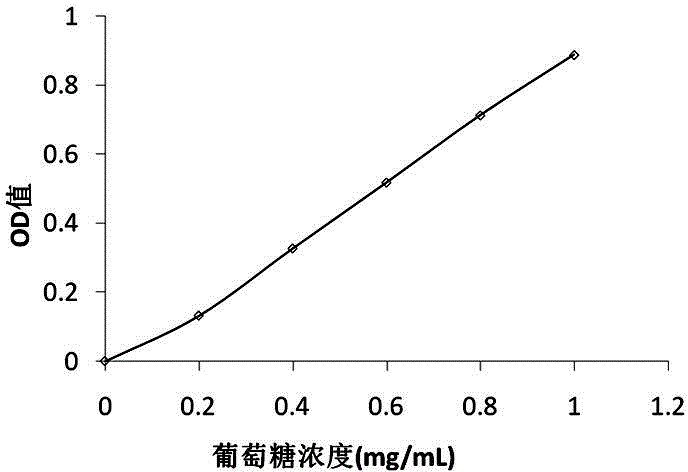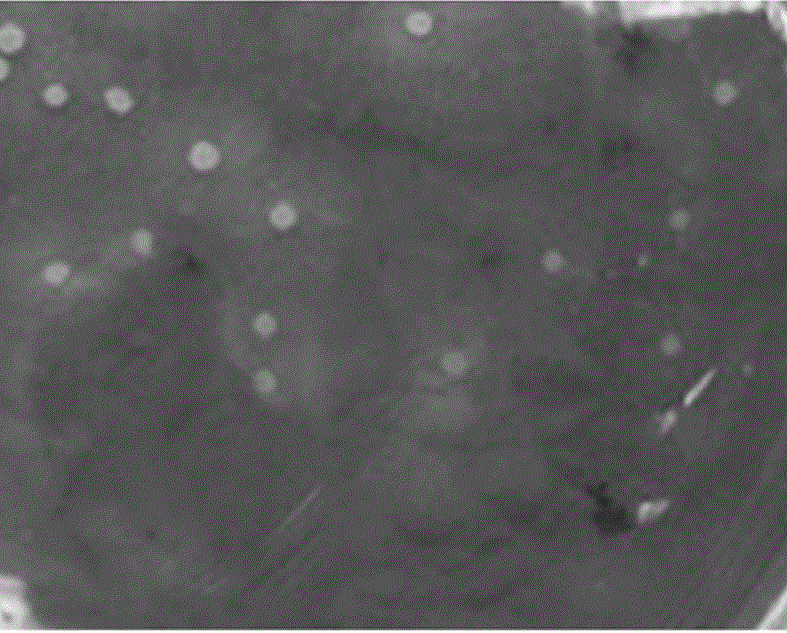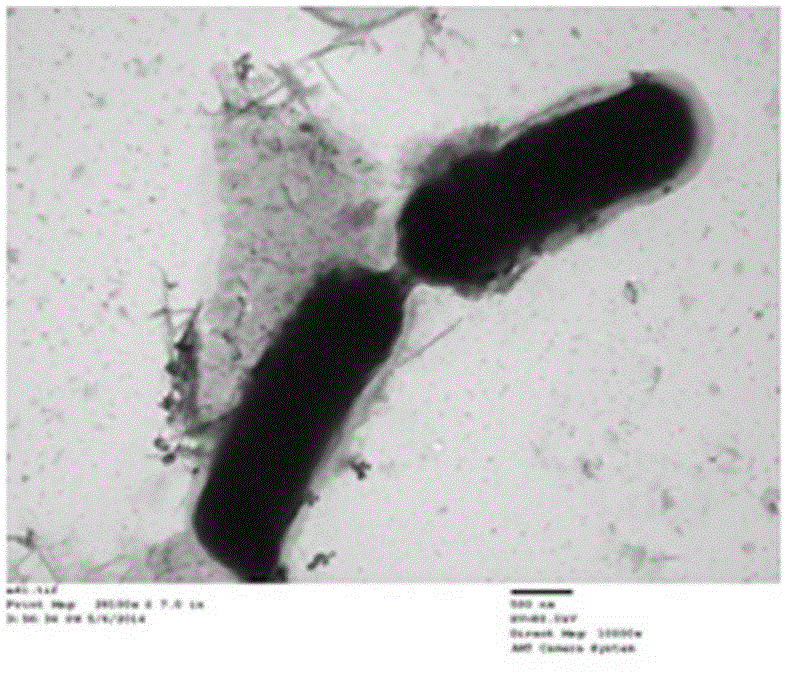Electricity-producing bacterium capable of degrading cellulose and application of electricity producing bacterium in fuel cells
A technology for degrading cellulose and fuel cells, applied in biochemical fuel cells, bacteria, final product manufacturing, etc., can solve the problems of poor electricity generation performance and inability to use cellulose to generate electricity, and achieve high electricity generation voltage and high use value , easy to cultivate effect
- Summary
- Abstract
- Description
- Claims
- Application Information
AI Technical Summary
Problems solved by technology
Method used
Image
Examples
Embodiment 1
[0025] The acquisition of embodiment 1 bacterial strain
[0026] (1) Isolation and purification of bacterial strains: the source comes from the anode of bipolar chamber circulation MFC fueled by carboxymethyl cellulose which has been running stably for 6 months, cut a small amount of carbon cloth, and put it into the concentration of mass percent with glass beads 1% NaCl solution, shake evenly, apply gradient dilution on a plate with carboxymethyl cellulose as the sole carbon source, and place in an anaerobic box (YQX-Ⅱ, Shanghai Xinmiao Medical Instrument Manufacturing Co., Ltd.) Cultivate at 30°C for 3 days; continue to streak and separate, and store;
[0027] (2) Screening of strains: inoculate the tested strains preserved in step (1) into the enzyme-producing medium for 48 h at 37°C with shaking, take 10 mL of fermentation broth, centrifuge at 4000 r / min for 10 min, and use the supernatant as crude enzyme solution; pipette 1.5 mL of acetic acid buffer solution (0.05 mol / L...
Embodiment 2
[0033] Identification of embodiment 2 strains
[0034] Morphological identification, physiological and biochemical identification and molecular identification were carried out on the obtained Citrobacter freundii HBUZL-1 respectively. The experimental process and results are as follows.
[0035] (1) Morphological identification of strains
[0036] The bacterial strains were identified by referring to the "Usual Identification Methods for General Bacteria", and the morphology of the bacteria was observed under a microscope by Gram staining. The results show that after cultivation, some single colonies that can produce transparent circles on the plate with carboxymethyl cellulose as the only carbon source are obtained. The results of the Congo red experiment are shown in figure 2 . Known by the strain morphological identification after cultivation: the cellulose-degrading Citrobacter freundii provided by the present invention ( Citrobacter freundii ) HBUZL-1 is a gram-negati...
Embodiment 3
[0044] Example 3 Application of electrogenic bacteria in biofuel cells
[0045] Construct a microbial fuel cell (MFC) system according to the existing method. The system includes a cathode chamber, an anode chamber, a resistance box and a proton exchange membrane. ZX21, 0-100000Ω), a piece of proton exchange membrane (Ultrex CMI7000, MI Mem. Int. Inc.) was connected between the two chambers through a short side tube.
[0046] (1) Detection of electrical activity of Citrobacter freundii HBUZL-1
[0047] After the MFC reactor and anolyte were sterilized at 121°C for 20 minutes, the anode chamber was inoculated with Citrobacter freundii HBUZL-1, and the operation was started with a data acquisition system (DAM-3058R voltage acquisition module, Beijing Altai Technology Co., Ltd.), Record the voltage once every 1 minute. When the output voltage drops below 0.3V, replace the anode fuel, and the temperature is room temperature (about 25°C). After stable operation, examine its power...
PUM
| Property | Measurement | Unit |
|---|---|---|
| Diameter | aaaaa | aaaaa |
Abstract
Description
Claims
Application Information
 Login to View More
Login to View More - R&D
- Intellectual Property
- Life Sciences
- Materials
- Tech Scout
- Unparalleled Data Quality
- Higher Quality Content
- 60% Fewer Hallucinations
Browse by: Latest US Patents, China's latest patents, Technical Efficacy Thesaurus, Application Domain, Technology Topic, Popular Technical Reports.
© 2025 PatSnap. All rights reserved.Legal|Privacy policy|Modern Slavery Act Transparency Statement|Sitemap|About US| Contact US: help@patsnap.com



